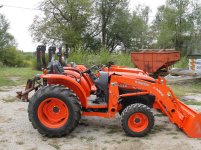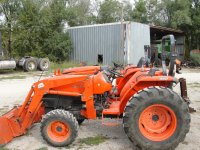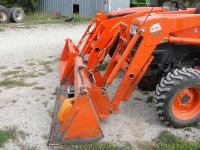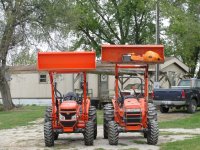k0ua
Epic Contributor
Update, I used it this weekend and Monday to push over several trees, (4 to 6 inch, 30 foot high) dug up a bunch of rocks, moved 10 tons of gravel, and cleared off many square feet of ground. All is well, nothing is "sprung" or cracked or bent. I like it better for digging than the factory QA bucket ( I did buy one when I converted) because it is narrower. I like the factory 66 incher when carrying materials. I may put a toothbar on this older narrower (58 inch) bucket later. Yeah if I had a plasma, I think I could have done things a little quicker . I am glad I did not give up, and cleaned it off, it even looks good now. Thanks for all the kind words.
. I am glad I did not give up, and cleaned it off, it even looks good now. Thanks for all the kind words.
James K0UA
James K0UA



